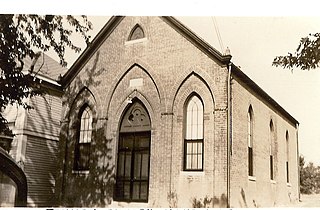Jewish Cubans, Cuban Jews, or Cubans of Jewish heritage, have lived in the nation of Cuba for centuries. Some Cubans trace Jewish ancestry to Marranos who came as colonists, though few of these practice Judaism today. The majority of Cuban Jews are descended from European Jews who immigrated in the early 20th century. More than 24,000 Jews lived in Cuba in 1924, and still more immigrated to the country in the 1930s. Following the 1959 communist revolution, 94% of the country's Jews emigrated, most of them to the United States. In 2007 an estimated 1,500 known Jewish Cubans remained in the country, overwhelmingly located in Havana. Several hundred have since immigrated to Israel. Considered one of the most important Latin American Jewish sites, Beth Shalom Temple is the epicenter for current Jewish life in Cuba and still conducts weekly Shabbat services.
Shmuel Szteinhendler, a rabbi in Santiago, Chile, is considered the current Chief Rabbi of Cuba and one of the most notable Rabbis in Latin America.

Beth Israel Synagogue is the synagogue of the Aruban Jewish community, located in Oranjestad, Aruba. Beth Israel Synagogue is an independent congregation with a liberal style similar to Reform Judaism or Conservative Judaism.
Congregation Beth Israel is an egalitarian Conservative synagogue located at 989 West 28th Avenue in Vancouver, British Columbia. It was founded in 1925, but did not formally incorporate until 1932. Its first rabbi was Ben Zion Bokser, hired that year. He was succeeded the following year by Samuel Cass (1933–1941). Other rabbis included David Kogen (1946–1955), Bert Woythaler (1956–1963), and Wilfred Solomon, who served for decades starting in 1964.
Beth Shalom or Beth Sholom may refer to:

Beth Shalom Reform Synagogue is a Reform Jewish congregation and synagogue, located on Auckland Road, in the City of Cambridge, England, in the United Kingdom.
Jews have been living in Maine, a state in the northeastern United States, for 200 years, with significant Jewish communities in Bangor as early as the 1840s and in Portland since the 1880s. The arrival of Susman Abrams in 1785 was followed by a history of immigration and settlement that parallels the history of Jewish immigration to the United States.
Emet veShalom is a synagogue in Nahariya, Israel. It was established in 1963 by a group of people, mainly Jewish immigrants from Germany and Central Europe, who sought a more liberal form of Judaism. Emet veShalom is one of the oldest Reform Judaism communities in Israel and is now the only non-Orthodox synagogue in Nahariya. It is affiliated to the Israel Movement for Reform and Progressive Judaism.

The Jewish community of Houston, Texas has grown and thrived since the 1800s. As of 2008, Jews lived in many Houston neighborhoods and Meyerland is the center of the Jewish community in the area.

Temple Beth El is a Reform Jewish synagogue located at 318 Monroe Street, in Jefferson City, Missouri, in the United States. Built in 1883 it has been in continuous use at that location since its construction. Shabbat services are led by members of the congregation every Friday night, and holiday services are also observed. The congregation is affiliated with Union for Reform Judaism. Temple Beth El is the oldest synagogue building in use west of the Mississippi.
Beth El Hebrew Congregation is a Reform Jewish synagogue located in Alexandria, Virginia, in the United States. Established on September 4, 1859, it is oldest active congregation in the Northern Virginia region.

Adath Shalom was a Conservative synagogue located at 607 W Ritner Street, in the Whitman neighborhood of South Philadelphia, Pennsylvania, in the United States. The synagogue opened in 1922 and closed in 2007.
Beth Shalom is a Progressive Jewish congregation in Auckland and the largest progressive congregation in the country. The congregation was started in 1952 and later a temple was constructed and consecrated in 1960. It is a member of the Union for Progressive Judaism. The congregation has over 500 members, hosts a Hebrew school, and also has a burial society.





